Water Droplet Falling on Resident Water, Ansys Fluent CFD Simulation Training
$100.00 $50.00 Student Discount
In this project, water droplet falling on resident water has been simulated and the results of this simulation have been investigated.
Click on Add To Cart and obtain the Geometry file, Mesh file, and a Comprehensive ANSYS Fluent Training Video.To Order Your Project or benefit from a CFD consultation, contact our experts via email (info@mr-cfd.com), online support tab, or WhatsApp at +44 7443 197273.
There are some Free Products to check our service quality.
If you want the training video in another language instead of English, ask it via info@mr-cfd.com after you buy the product.
Description
Water Droplet Falling Project Description
In this project, numerical simulation of water from falling on resident water has been done using Ansys Fluent software. The goal of this project is to simulate raindrop impact on resident water. The Eulerian multiphase model has been used. The drop has an initial speed of zero, and gravity force pulls it down. gravity considered as -9.81 m/s-2 in y-axis.
Geometry & Mesh
The 3-D geometry of the present model is carried out using Design Modeler software. The geometry consists of three sections. The lower section is resident water. The upper section contains the outlet, and the upper section is air; the drop is considered a sphere of water with a physical diameter.
The meshing of this present model has been generated by Ansys Meshing software. The mesh grid is unstructured with no element quality lower than 0.53, and the total cell number is 3116593. the figure below shows an overview of the performed mesh.
Water Droplet Falling CFD Simulation
To simulate the present model, several assumptions are considered, which are:
- The solver is pressure-based and transient.
- Simulation has only examined fluid behavior; in other words, heat transfer simulation has not been performed.
- The effect of gravity on the flow is considered to be 9.81 m.s-2 and along with the y-axis in the present model.
The following is a summary of the steps for defining the problem and its solution
| Models | ||
| K-omega | Viscous model | |
| SST | k-omega model | |
| shear flow corrections | k-omega options | |
| air | primary phase | |
| water | secondary phase | |
| explicit | formulation | |
| Boundary conditions | ||
| intersection | Interface | |
| 0 | initial gauge pressure | Mixture |
| Air domain | Coupled wall | Water |
| 1 | volume fraction | |
| Pressure outlet | outlet | |
| 1 | backflow volume fraction | Air |
| 0 | backflow volume fraction | Water |
| wall | Wall | |
| stationary wall | wall motion | |
| Solution Methods | ||
| Phase coupled | pressure-velocity coupling | |
| PRESTO! | pressure | |
| first-order upwind | momentum | |
| first-order upwind | specific dissipation rate | |
| first-order upwind | volume fraction | |
| Initialization | ||
| standard | initialization method | |
| 0 | water velocity (0,y,0) | |
| 0 m/s | air velocity (x,y,z) | |
| 1 | the secondary phase volume fraction | |
Water Droplet Falling Results
At the end of the solution process, two-dimensional and three-dimensional velocity, air and water volume fraction, and animation are obtained. This 3-D simulation has been performed to see the motion of water drop and gravity effect on two mixed fluid combinations. In this simulation, you see water drop has been pulled down with gravity force and impacts on the water surface.
You can obtain Geometry & Mesh file and a comprehensive Training Movie which presents how to solve the problem and extract all desired results.
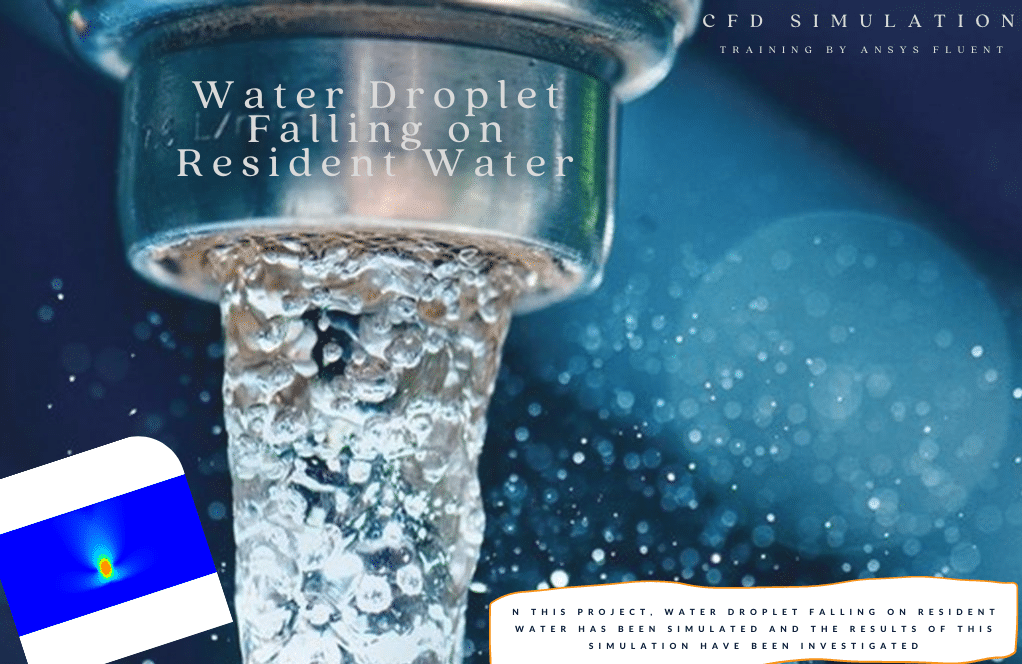
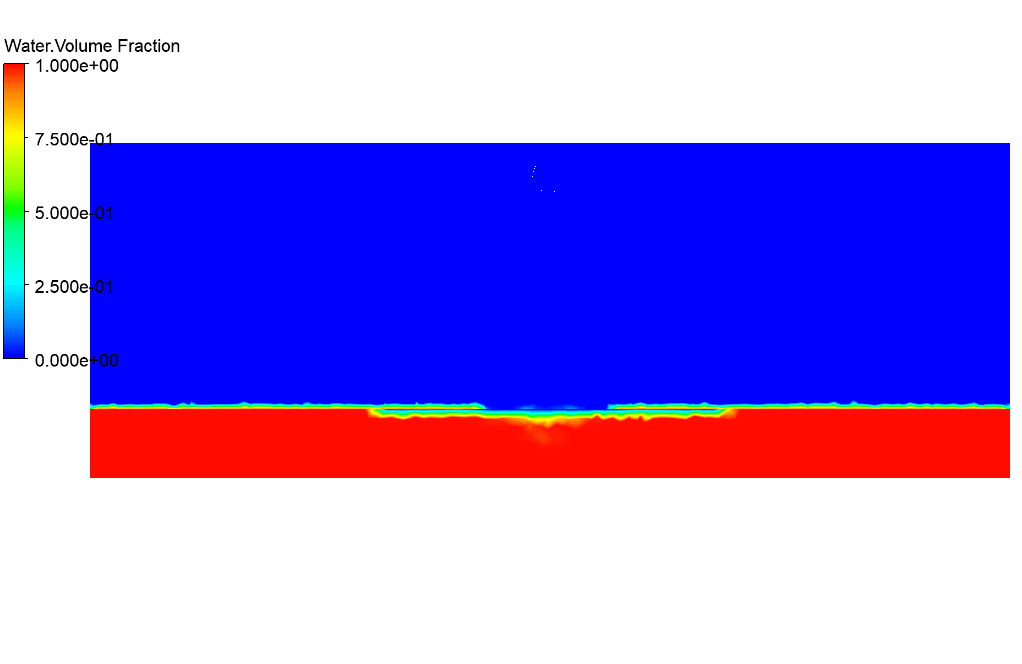
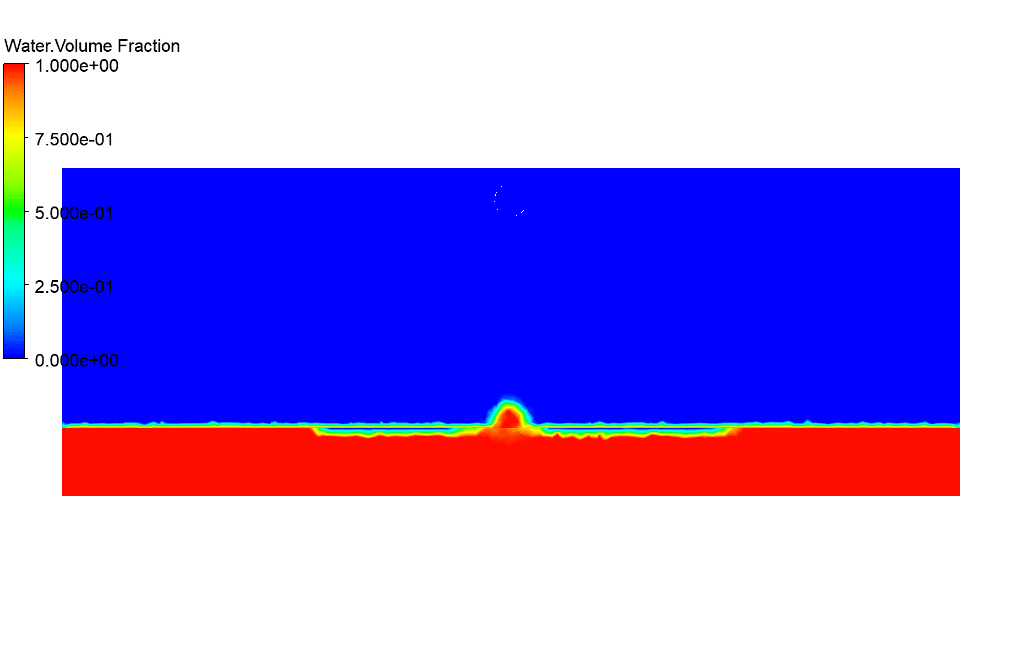
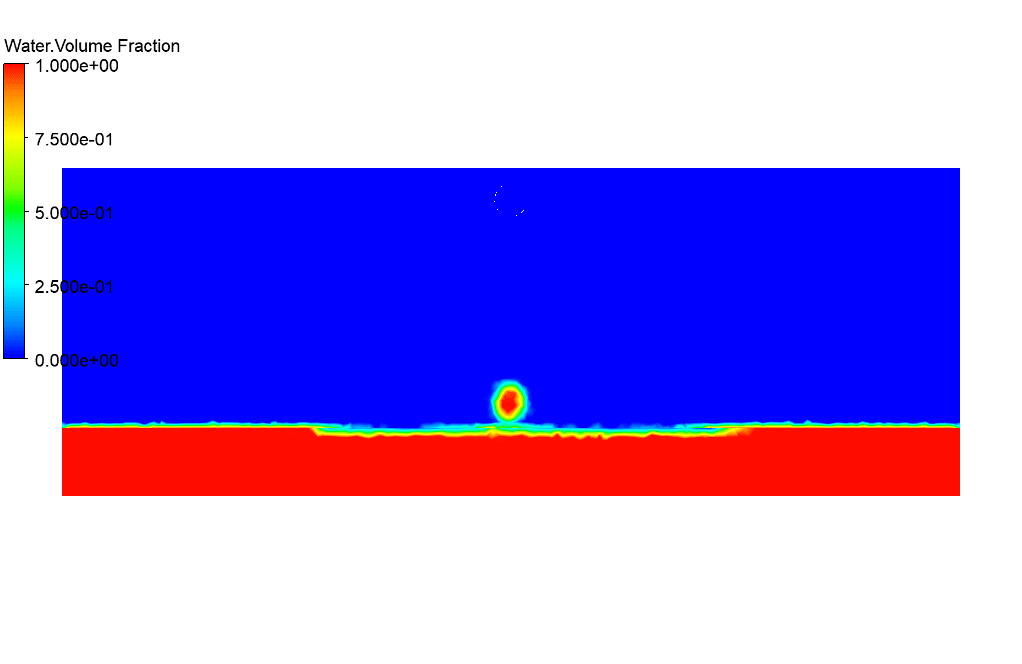
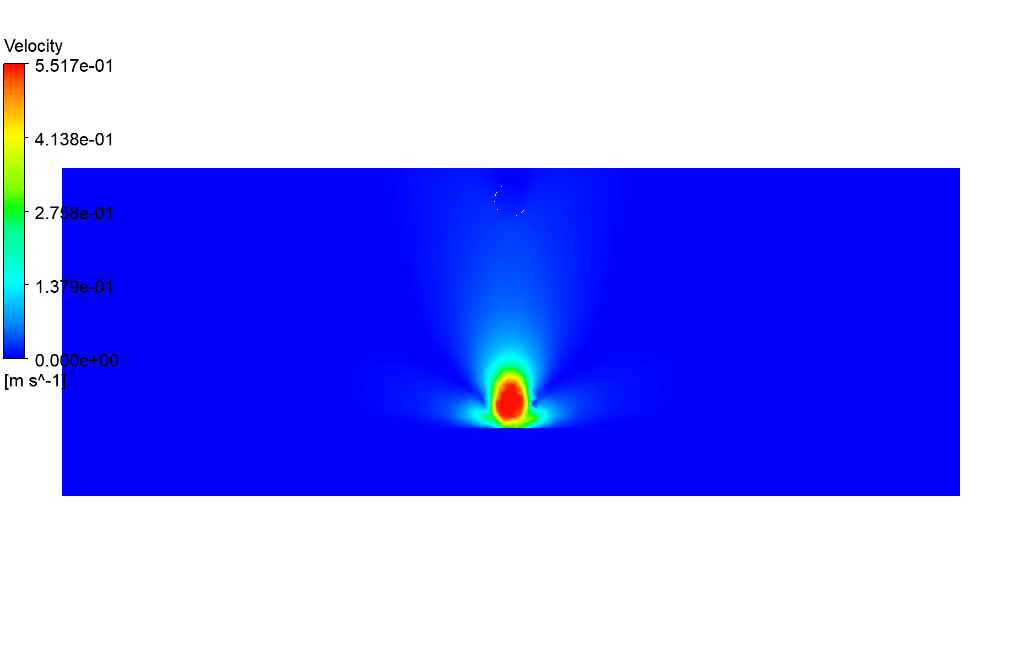
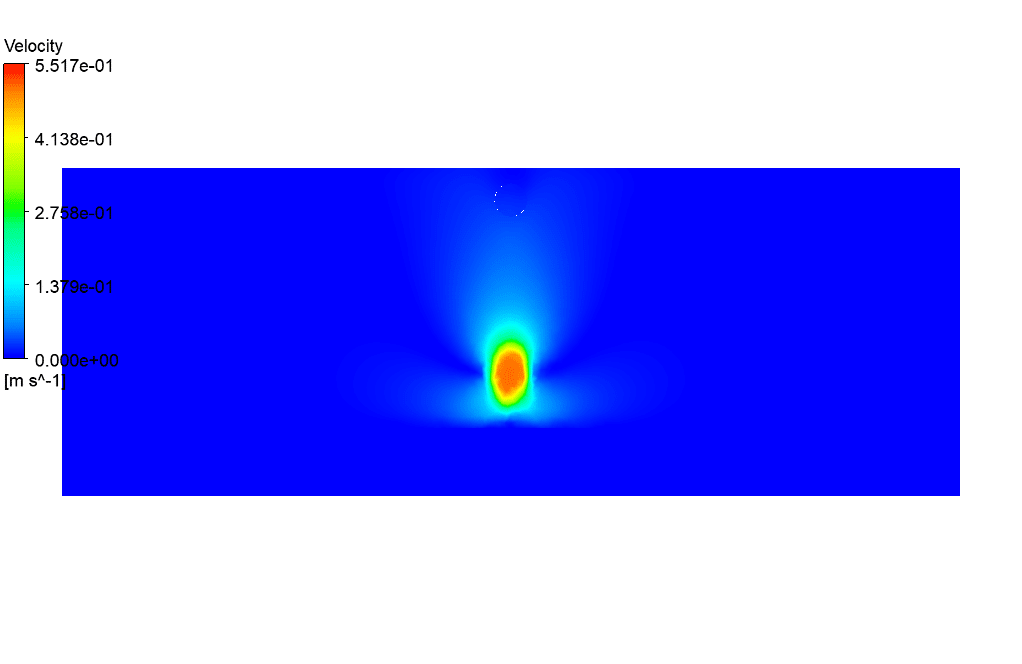
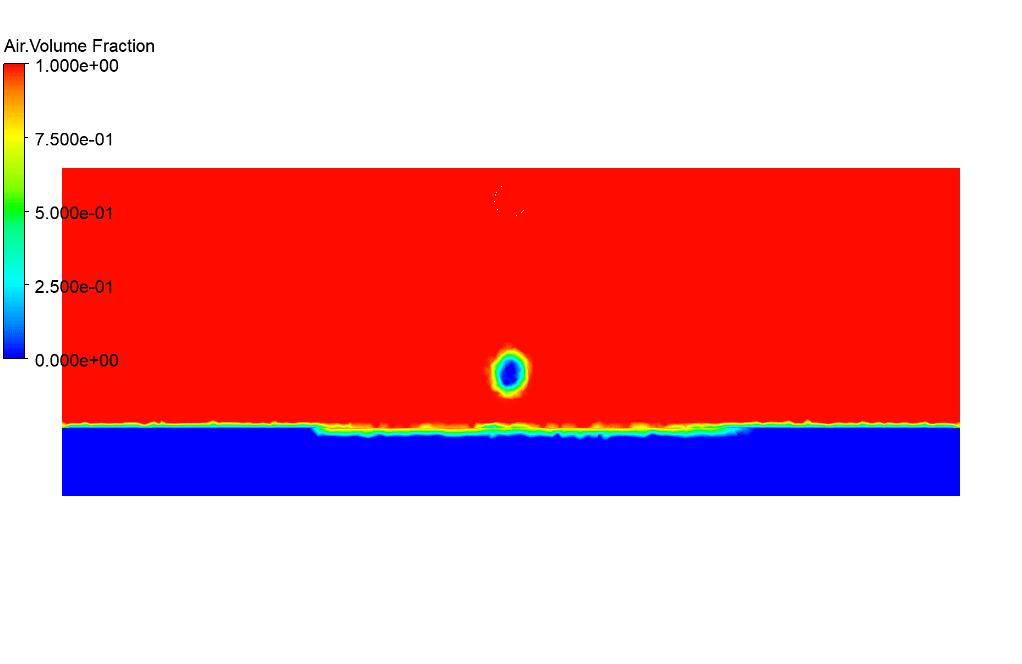
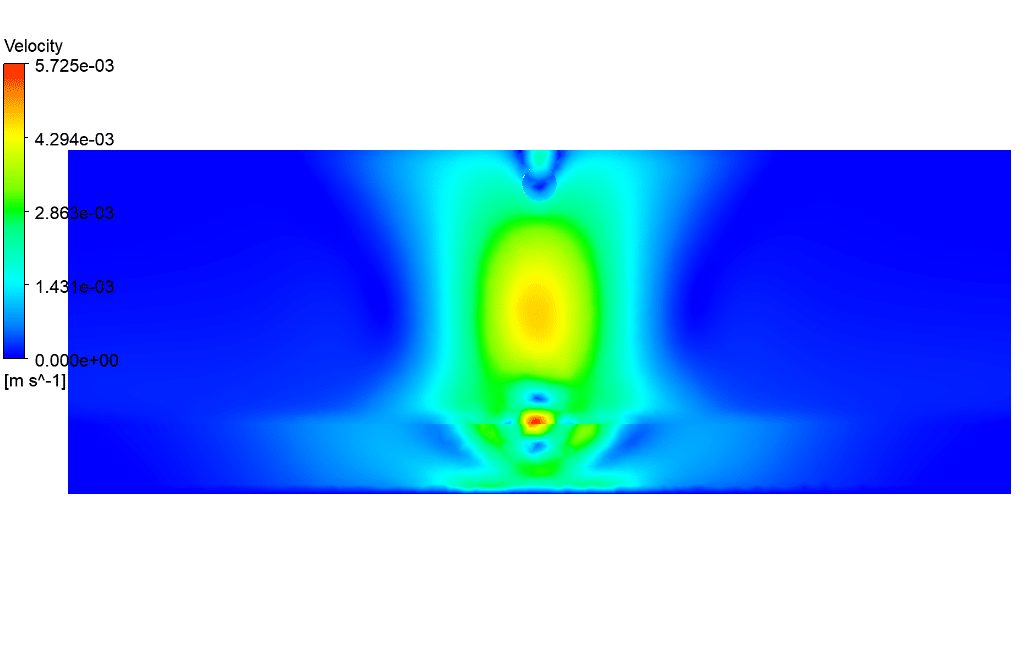
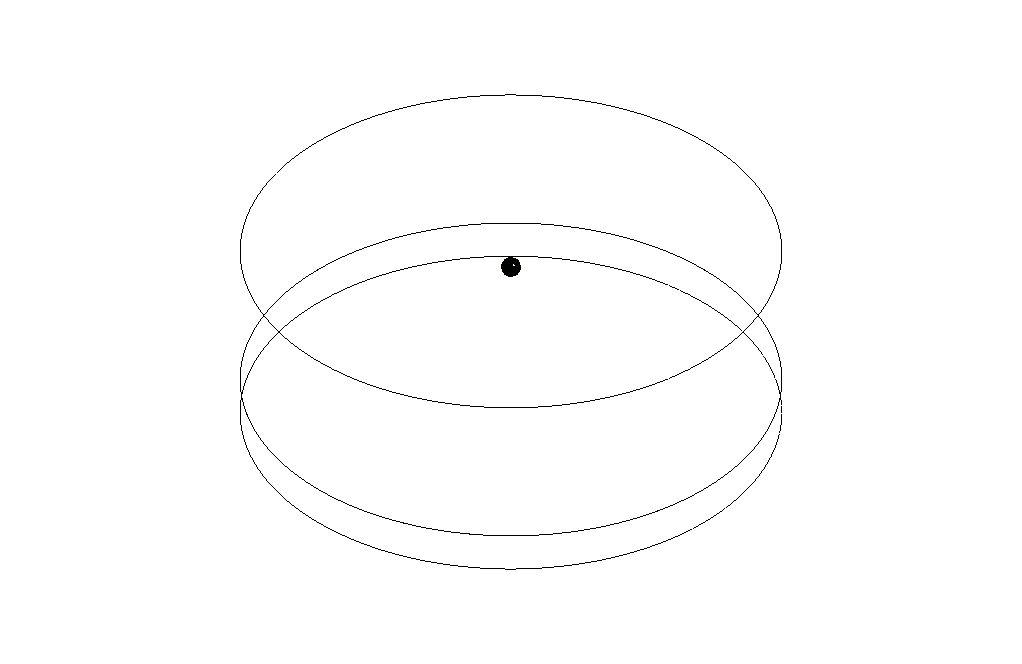

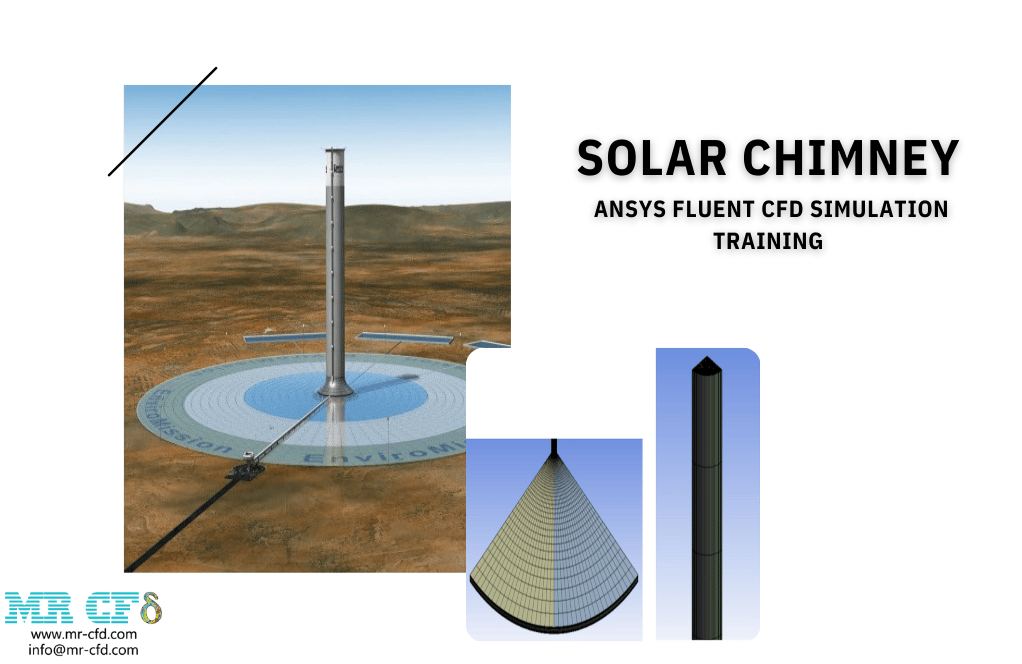



Lorenza Schneider –
I wasn’t able to see the effect of the water droplet merging with the resident water in the simulations. Can you explain if the merging dynamics are visible in the results?
MR CFD Support –
Yes, the merging dynamics of the water droplet with the resident water are visible in the results. The animation and the two- and three-dimensional contours of velocity and volume fraction provide a clear picture of how the water droplet impacts the water surface, merges, and how the resulting ripples and disturbances propagate.
Colt Grimes –
The description mentions using the ‘intersection Interface.’ Could you please explain what that means in the context of the simulation settings?
MR CFD Support –
The ‘intersection Interface’ refers to a boundary set up within the simulation where two different regions meet, in this scenario, where the falling droplet meets with the resident water. At this interface, conditions must be defined to simulate the interaction between the droplet and resident water as they come into contact and interact during the simulation, such as the exchange of momentum between the phases.
Fausto Collier –
The information provided was thorough and enlightening. I especially appreciated the detailed breakdown of both the geometry sectioning and simulation models used to recreate the phenomenon of a water droplet falling onto a body of water. Amazing work!
MR CFD Support –
Thank you for your kind words! We’re thrilled to hear that our detailed approach to simulating the water droplet scenario provided you with clear insights. We always strive to offer comprehensive explanations and data in our training products.
Jazmin Lemke –
I’m impressed with the detail in the Water Droplet Falling on Resident Water simulation. The visualization of the droplet’s impact is fascinating.
MR CFD Support –
Thank you for your kind words! We’re delighted to hear that the simulation provided the valuable insights you were looking for. Should you need any further information or assistance, don’t hesitate to ask.
Colby Gutkowski MD –
This training material helped me visualise the impact of water droplets on water surfaces perfectly! Thank you for the clear and informative instructions. The step-by-step process guided me through the complexity of using Ansys Fluent for such a dynamic simulation with ease.
MR CFD Support –
Thank you so much for your positive feedback. We’re glad to hear that the material was clear and helped you understand the simulation process. If you have any improvement suggestions or further inquiries, feel free to reach out. We appreciate your support and look forward to assisting you with any future learning needs!
Andreanne Crist –
I enjoyed following the training for the water droplet simulation. The instructions for setting up boundary conditions were especially clear. Great work!
MR CFD Support –
Thank you for your positive review! We are thrilled to hear that you found the training instructions for setting up boundary conditions clear and useful. Our goal is to ensure our customers have a thorough understanding of simulations. If you need any further assistance or have more questions, we are always here to help!
Brock Rath –
Great example of a multiphase flow simulation! The level of detail and step-by-step explanation for setting up the simulation in ANSYS Fluent is commendable. Really provides insight into the complexities of modeling interactions between fluids.
MR CFD Support –
Thank you for your positive review! We’re pleased to hear that our training for the water droplet falling on resident water simulation in ANSYS Fluent met your expectations and provided clear guidance through the complexities of multiphase flow modeling. Your feedback is much appreciated!
Broderick Ortiz –
Was the simulation able to capture the crown formation typically seen when a droplet impacts on resident water?
MR CFD Support –
In the results of the Water Droplet Falling CFD Simulation project using ANSYS Fluent, the behavior and interaction of the water droplet as it impacts the resident water have been captured, including the effects that lead to crown formation. The Eulerian multiphase model and the conditions applied help in visualizing the physics accurately, including gravity’s effect, droplet deformation, and splashing patterns, which indicate the potential of crown formation.
Fern Padberg MD –
I’ve learned a lot from the Water Droplet Falling simulation training and had an amazing experience with the details provided. The realistic behavior of the water droplet interaction was fascinating to watch. The training helped me understand multiphase flow much better.
MR CFD Support –
Thank you for your positive review! We are thrilled to hear that our Water Droplet Falling CFD Simulation training enhanced your understanding of multiphase flow. It’s always our goal to provide comprehensive educational experiences and make complex concepts more accessible. If there’s any more you’d like to explore or learn about, our resources are here for you!
Dr. Mina Carroll Sr. –
I am truly amazed at the level of detail in the ‘Water Droplet Falling’ project using Ansys Fluent. The approach taken to simulate the raindrop impact on resident water is innovative and educational. The completeness of the geometry, meshing and defining boundary conditions showcases a well-thought-out process which is intriguing to any CFD enthusiast.
MR CFD Support –
Thank you so much for your kind words! We’re thrilled to hear that you’re satisfied with our ‘Water Droplet Falling’ simulation training. Our team takes great care to ensure that each project is carefully planned and executed to provide a clear and comprehensive learning experience. We are glad that you find our approach innovative and educational. If there’s anything else you want to know or need further assistance with, please don’t hesitate to reach out.
Dr. Cortez Kunde III –
I really enjoyed the detailed analysis of the water droplet impact simulation. Watching the gravity pull the droplet down and collide with the water surface was fascinating. The high-quality mesh and the precision in defining complex multiphase interactions are commendable. Thanks for providing such a comprehensive training resource.
MR CFD Support –
Thank you for your positive feedback! We’re delighted to hear that you found the water droplet simulation analysis captivating and our training materials comprehensive. Your appreciation truly motivates us to continue delivering high-quality educational content. If you have any more questions or need further assistance with our learning products, please don’t hesitate to reach out.
Dasia Carroll PhD –
The attention to detail in both geometry and meshing ensures great accuracy in the simulation. This precise modeling work allows for a very realistic representation of water droplets impacting resident water—an exceptional tool for understanding raindrop dynamics in various environments. Well done!
MR CFD Support –
Thank you for your kind words! We strive for accuracy and realism in our simulations to provide valuable insights into complex fluid dynamics. We’re delighted to hear that you appreciate the effort that went into the water droplet project. If you have any further questions or require assistance with your CFD pursuits, feel free to reach out to us.
Mr. Conner Ankunding –
Can this simulation be adapted to study multiple interacting droplets and their collective behavior upon impacting the resident water?
MR CFD Support –
1
Esther Douglas –
Is the effect of surface tension between the water droplet and the resident water taken into account in this simulation?
MR CFD Support –
In the Water Droplet Falling simulation scenario, surface tension is an important factor that has likely been considered in defining the interface between the falling water droplet and the resident water. Ansys Fluent has the capability to include surface tension in multiphase flow simulations.
Tanner Wehner –
Was the effect of air resistance on the falling droplet considered in this simulation, and how does it impact the results?
MR CFD Support –
In the simulation, the multiphase model captures the interaction between the water droplet and the air. The effect of air resistance is inherently taken into account in the Eulerian multiphase framework, which influences the trajectory and deformation of the water droplet as it falls and impacts the resident water, resulting in realistic simulation outcomes.
Kitty Larson Sr. –
Does the simulation address how the water droplet’s properties, such as surface tension or droplet size, affect the results?
MR CFD Support –
The description does not include specific details on the surface tension or variation in droplet size. However, such properties are typically important in simulations of water droplet interactions and can definitely affect results. For accurate insight into these considerations, the actual settings and results within the Ansys Fluent simulation would need to be reviewed.
Everardo Jacobson –
I’m quite impressed with the comprehensive data provided and the detailed formulation of the CFD simulation. I imagine visualizing the droplet impact must have been compelling. Could you share specific insights into the effects observed in the resident water wave patterns after the droplet impact?
MR CFD Support –
Thank you for your kind words! Indeed, the visualization of the droplet impact is fascinating. After the droplet collides with the resident water, you can observe the formation of waves and ripples spreading outward from the point of impact. Moreover, intriguing phenomena such as splashing and the creation of secondary droplets, known as splatter, can also be evidenced. This is particularly useful for studies related to weathering in materials, soil erosion, or any application where rain impact plays crucial roles. The simulation provides valuable qualitative and quantitative insights into these dynamic interactions.
Maymie Murray –
The simulation captures the details of a water droplet impact so well! It’s amazing to visualize how such a small event unfolds.
MR CFD Support –
Thank you! We’re glad to hear that our simulation training helped visualize the complexities involved in a seemingly simple phenomenon like a water droplet’s impact. It’s fantastic that you found the detail within our Ansys Fluent CFD simulation to be impressive. If you have any further inquiries or require additional support, feel free to reach out!